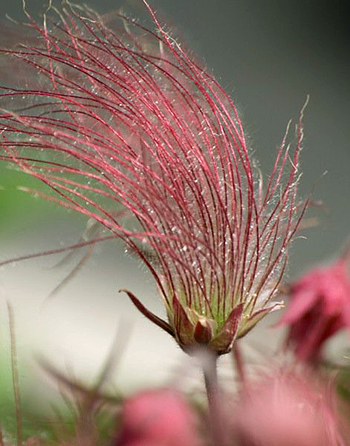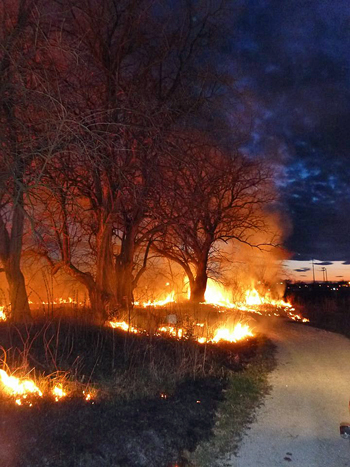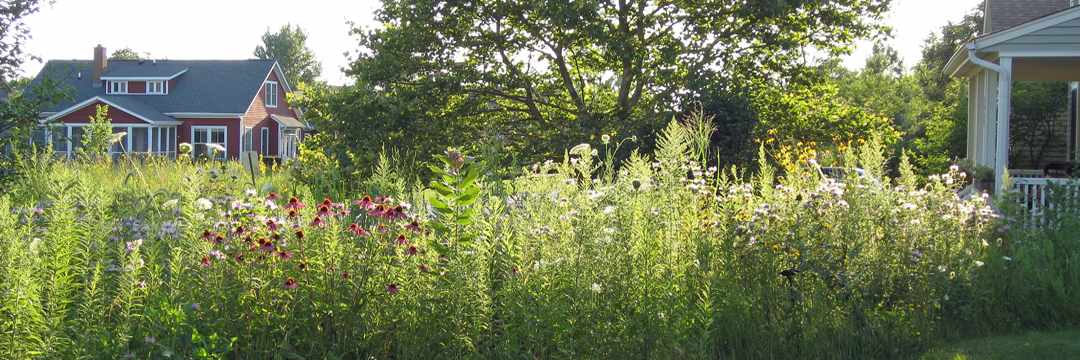Native Landscaping
Prairie Crossing is well known for its beautiful native prairie landscaping, one of its defining features. The land, which had been farmed for corn and soybeans prior to development, was replanted to the original native prairie and wetland plant species that covered the Midwest prior to nineteenth century cultivation. Ten miles of trails wind through a landscape of farm fields, pastures, lakes and ponds, native prairies and wetlands. Residents use them to walk, run, bike, ski, ride horseback, and watch the many species of birds, butterflies and other wildlife that are attracted to a healthy ecosystem and native landscaping.
Benefits of Native Landscaping
 At Prairie Crossing people live in ways that are good for them and healthy for the land. Over 60 percent of the 677-acre site is protected open land that is actively used by people and wildlife. With more than 175 acres of restored prairies, 20 acres of restored wetlands, and 16 acres of historic hedgerows, the Prairie Crossing landscape is contributing to the restoration of the native ecology of the region.
At Prairie Crossing people live in ways that are good for them and healthy for the land. Over 60 percent of the 677-acre site is protected open land that is actively used by people and wildlife. With more than 175 acres of restored prairies, 20 acres of restored wetlands, and 16 acres of historic hedgerows, the Prairie Crossing landscape is contributing to the restoration of the native ecology of the region.
Native species have evolved to be specifically suited to local growing conditions and are drought-hardy due to their extensive deep root systems. Native species support biodiversity and provide food sources for birds, butterflies, and insects through their nectar, pollen, and seeds. Though cultivars and non-native species may look similar, they do not similarly support wildlife and often require water, fertilizers, and other chemical interventions. Native plants brighten the landscape with alternating colors of seasonal grasses and forbs (flowering plants).
Native landscaping also serves an important function in cleansing the storm water on the site and protecting the water quality of lakes. Hardier and more sustainable, it requires less water and labor than traditional lawns or more formal plantings, prevents flooding and lowers maintenance costs. Many Prairie Crossing residents integrate these native plant communities into their own landscaping to showcase their houses in formal groupings or planted as wild meadows, integrating seamlessly with the native landscape in adjoining prairie areas and contributing to the overall land ethic. Over 60 homes have been certified through Conserve Lake County’s Conservation@Home program.
Land Management
 Each ecological unit of Prairie Crossing’s common areas has a long-term science based management plan.
Each ecological unit of Prairie Crossing’s common areas has a long-term science based management plan.
Environmental management of the prairie includes periodic prescribed burns. These controlled burns stimulate the growth of native vegetation, suppress non-native weeds, and require less fossil fuels than mowing. Prairie burns on common areas are conducted by professional contractors and highly trained resident volunteers serving on the Environmental Stewardship Committee. Individual homeowners are permitted to conduct prescribed burns on their own property if they meet a number of criteria and follow the defined process outlined by the Prairie Crossing Homeowners Association.
Volunteers on Prairie Crossing’s Environmental Stewardship Committee (ESC) dedicate countless hours to the improvement of Prairie Crossing’s natural areas. ESC workdays are held regularly during the spring, summer, and fall and restoration work is aligned with the Environmental Management Plan. Volunteers invasive plants, care for new plantings, and burn the prairie in spring and fall. These volunteer work days provide hands-on education for those who participate and valuable work-hours for the benefit of Prairie Crossing’s natural areas – they also generate an active sense of community.
Video Tour
At Prairie Crossing, over 175 acres have been restored to native vegetation, with prescribed burns as a management tool.
In celebration of the 20th anniversary of the first Prairie Crossing home, a video series was created to highlight the unique features of Prairie Crossing during each season. Click here to watch more videos in this video series on Prairie Crossing.
Resources on Native Landscaping
Learn more about native landscaping and increase biodiversity on your own property with information from the following resources:
 Prairie Crossing
Prairie Crossing